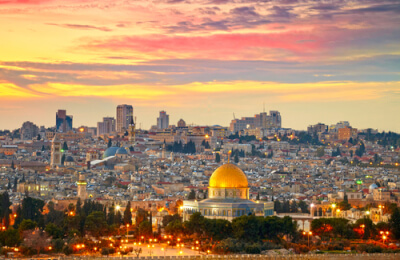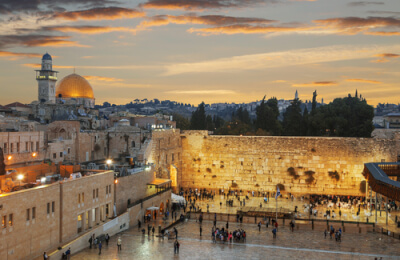1. Christian Jerusalem Promotion

160. From temple to temple Promotion
 175₪
175₪
 175₪
175₪
We also found excursions from other cities that are close to your departure city
Other excursions that also deserve your attention
The Mount of Olives: A Timeless Beacon of Spirituality and History in Israel
Israel, a land steeped in history, culture, and spirituality, is home to a remarkable array of sights and landmarks that have captivated travelers for centuries. Among the many treasures that grace this diverse country, the Mount of Olives stands as a timeless beacon of spirituality and history. In this article, we will delve into the concept of sightseeing in Israel and explore the fascinating history, spiritual significance, and interesting facts surrounding the Mount of Olives.
Sightseeing in Israel
Sightseeing in Israel is a journey through time and faith, offering visitors a profound blend of history, spirituality, and natural beauty. The country's diverse landscapes, from the ancient streets of Jerusalem to the serene shores of the Sea of Galilee and the arid expanses of the Negev Desert, provide a rich tapestry of experiences. Whether you seek to explore ancient ruins, connect with your faith, marvel at natural wonders, or immerse yourself in vibrant cultural traditions, Israel offers a myriad of choices for every traveler.
From the iconic Western Wall in Jerusalem to the tranquil beauty of the Sea of Galilee, the imposing fortress of Masada, and the bustling markets of Tel Aviv, Israel is a treasure trove of captivating destinations. In this mosaic of experiences, the Mount of Olives, overlooking the Old City of Jerusalem, stands as a symbol of profound spiritual and historical significance.
Mount of Olives: A Symbol of Spirituality and History
The Mount of Olives, known in Hebrew as Har HaZeitim, is a prominent hill that rises to the east of the Old City of Jerusalem. This iconic landmark holds immense spiritual and historical significance for multiple faiths, particularly Judaism, Christianity, and Islam.
History and Significance
The Mount of Olives has a history that stretches back thousands of years. It is mentioned in the Hebrew Bible as the place where King David fled during the rebellion of his son Absalom. In the New Testament, it is described as the location of several important events in the life of Jesus, including his ascension to heaven and his weeping over Jerusalem.
For Jews, the Mount of Olives is traditionally associated with the resurrection of the dead, and it is considered one of the holiest burial sites in Judaism. It is believed that the Messiah will arrive at the Mount of Olives, and as a result, many Jewish individuals from around the world choose to be buried there.
In Christianity, the Mount of Olives holds a central place in the events of Holy Week, including Jesus' entry into Jerusalem on Palm Sunday, the Last Supper, his arrest in the Garden of Gethsemane, and his ascension to heaven. Several churches and religious sites on the mount commemorate these events.
Fascinating Facts about the Mount of Olives
1. Spectacular Views: The Mount of Olives offers some of the most spectacular panoramic views of the Old City of Jerusalem. Visitors can gaze upon iconic landmarks such as the Dome of the Rock, the Western Wall, and the Church of the Holy Sepulchre from this vantage point.
2. Ancient Olive Trees: The mount is dotted with ancient olive trees, some of which are believed to be over a thousand years old. These olive trees add to the timeless beauty and symbolism of the site.
3. Jewish Cemetery: The Jewish cemetery on the Mount of Olives is one of the oldest and largest in the world. It contains tens of thousands of graves, including those of prominent Jewish figures throughout history.
4. Church of All Nations: Also known as the Basilica of the Agony, this beautiful church at the base of the Mount of Olives commemorates the events of Jesus' agony and arrest in the Garden of Gethsemane. It features a stunning mosaic ceiling.
5. Tomb of the Prophets: This ancient burial site, believed to contain the remains of biblical prophets, is an important pilgrimage destination for Jewish visitors.
6. Ascension Chapel: The Chapel of the Ascension, located on the summit of the mount, is traditionally believed to mark the spot where Jesus ascended to heaven. The chapel's dome is a distinctive feature on the mount's skyline.
7. Multifaith Significance: The Mount of Olives is significant for multiple faiths, including Judaism, Christianity, and Islam. It serves as a symbol of interfaith dialogue and coexistence in Jerusalem.
Visiting the Mount of Olives
For travelers interested in exploring the Mount of Olives and its surroundings, here are some practical tips:
1. Location: The Mount of Olives is located to the east of the Old City of Jerusalem. It is easily accessible by foot or by car. Many guided tours of Jerusalem include a visit to the mount.
2. Modest Attire: When visiting religious sites on the Mount of Olives, it is advisable to dress modestly out of respect for the spiritual significance of the area.
3. Guided Tours: Consider joining a guided tour to gain a deeper understanding of the historical and religious significance of the mount and its associated sites.
4. Sunset Views: Watching the sunset from the Mount of Olives is a memorable experience, as the golden hues cast over the Old City create a breathtaking scene. Plan your visit to coincide with this beautiful natural spectacle.
Conclusion
Israel's wealth of sights and experiences offers travelers a profound connection to history, faith, and cultural heritage. The Mount of Olives, with its spiritual significance, ancient olive trees, and breathtaking views of Jerusalem, stands as a symbol of the enduring spirituality and historical legacy of the Holy Land. As you stand on this iconic hill and gaze upon the city below, you become a part of a timeless narrative that has shaped the course of history and continues to inspire pilgrims and visitors from around the world.






